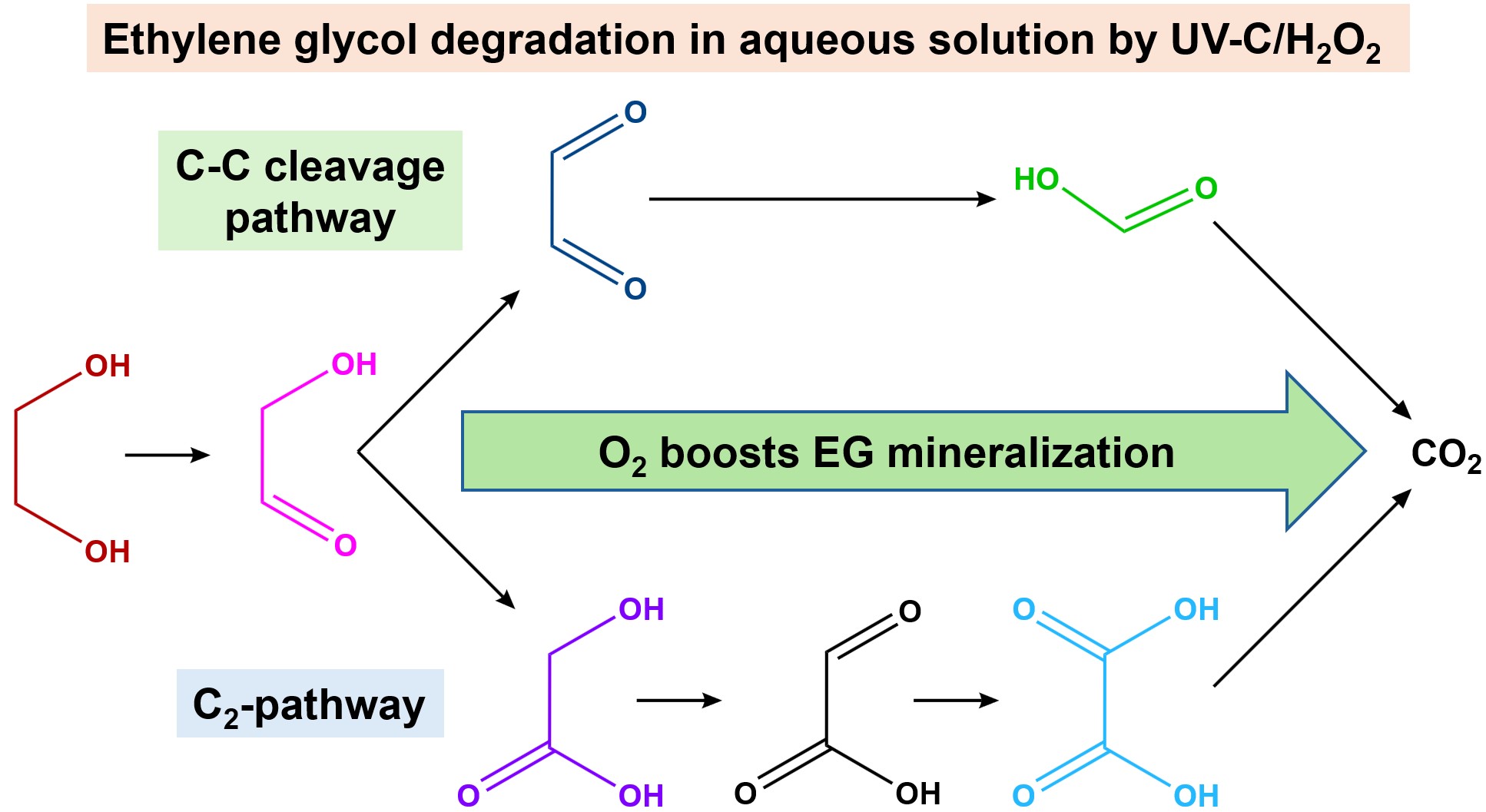Preprint
Article
Kinetic Aspects of Ethylene Glycol Degradation using UV-C Activated Hydrogen Peroxide (H2O2/UV-C)
Altmetrics
Downloads
8
Views
10
Comments
0
supplementary.pdf (626.83KB )
This version is not peer-reviewed
Submitted:
18 November 2024
Posted:
19 November 2024
You are already at the latest version
Alerts
Abstract
Ethylene glycol (EG) is one of the contaminants in wastewater of airports because it is commonly used in the composition of aircraft deicing fluids during the cold season in northern regions. Ethylene glycol by itself has comparably low toxicity on mammals and aquatic life, but it can lead to substantial increase in chemical and biological oxygen demands. Contamination of water with EG facilitates the rapid growth of microbial biofilms that decreases the concentration of dissolved oxygen in water and negatively affects overall biodiversity. The development of simple method to decompose EG with a high efficiency and low operating costs is an important task. This study shows that ethylene glycol can be completely oxidized using UV-C activated hydrogen peroxide (H2O2/UV-C) with a high rate (up to 56 mg L–1 h–1) at optimum EG:H2O2 molar ratio of 1:10–1:15. Air purging the reaction solution at 1000 cm3 min–1 increases EG mineralization rate up to 2 times because simultaneous action of UV-activated H2O2 and O2 (H2O2 + O2/UV-C) leads to a synergistic effect, especially at low EG:H2O2 ratios. The kinetics and mechanism of EG degradation are discussed based on the kinetic plots of ethylene glycol and intermediate products.

Keywords:
Subject: Chemistry and Materials Science - Physical Chemistry
Copyright: This open access article is published under a Creative Commons CC BY 4.0 license, which permit the free download, distribution, and reuse, provided that the author and preprint are cited in any reuse.
Detrimental Effect of Ozone on Pathogenic Bacteria
Karyne Rangel
et al.
,
2021
MDPI Initiatives
Important Links
© 2024 MDPI (Basel, Switzerland) unless otherwise stated








